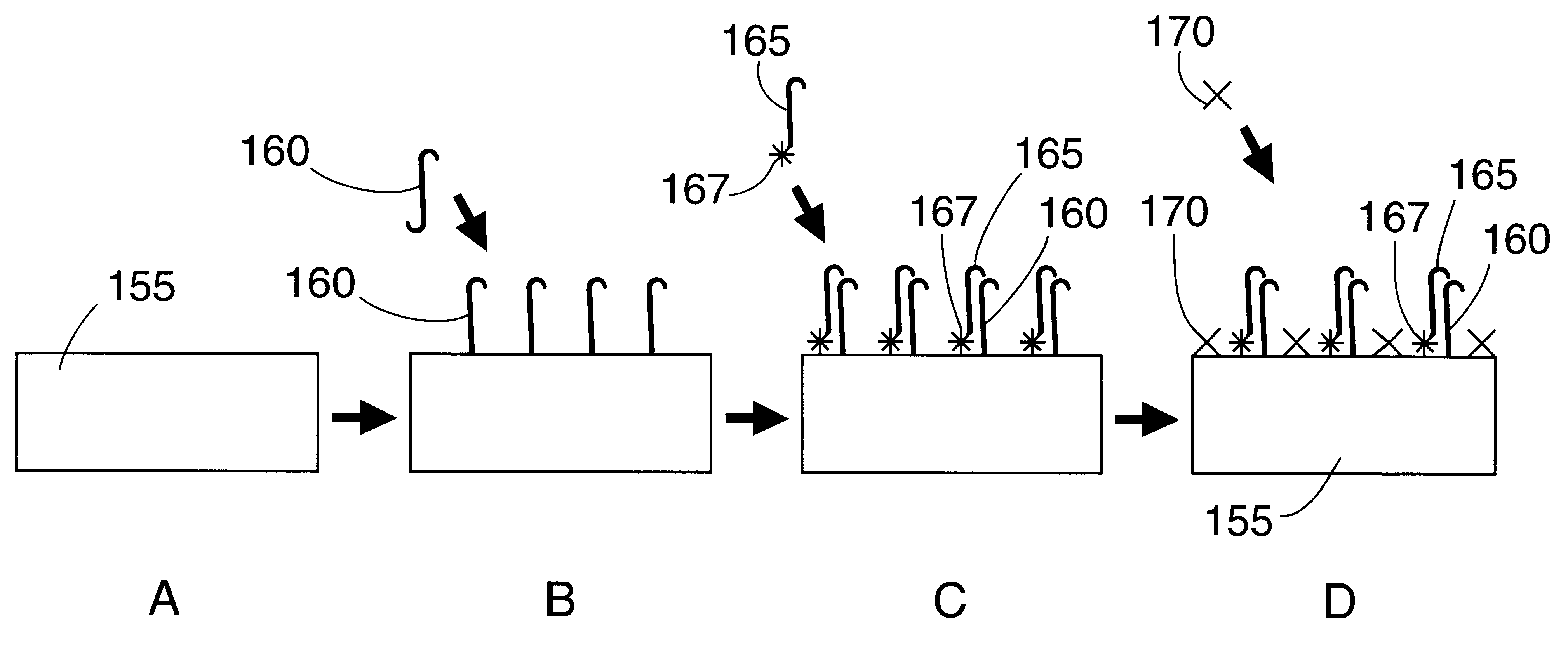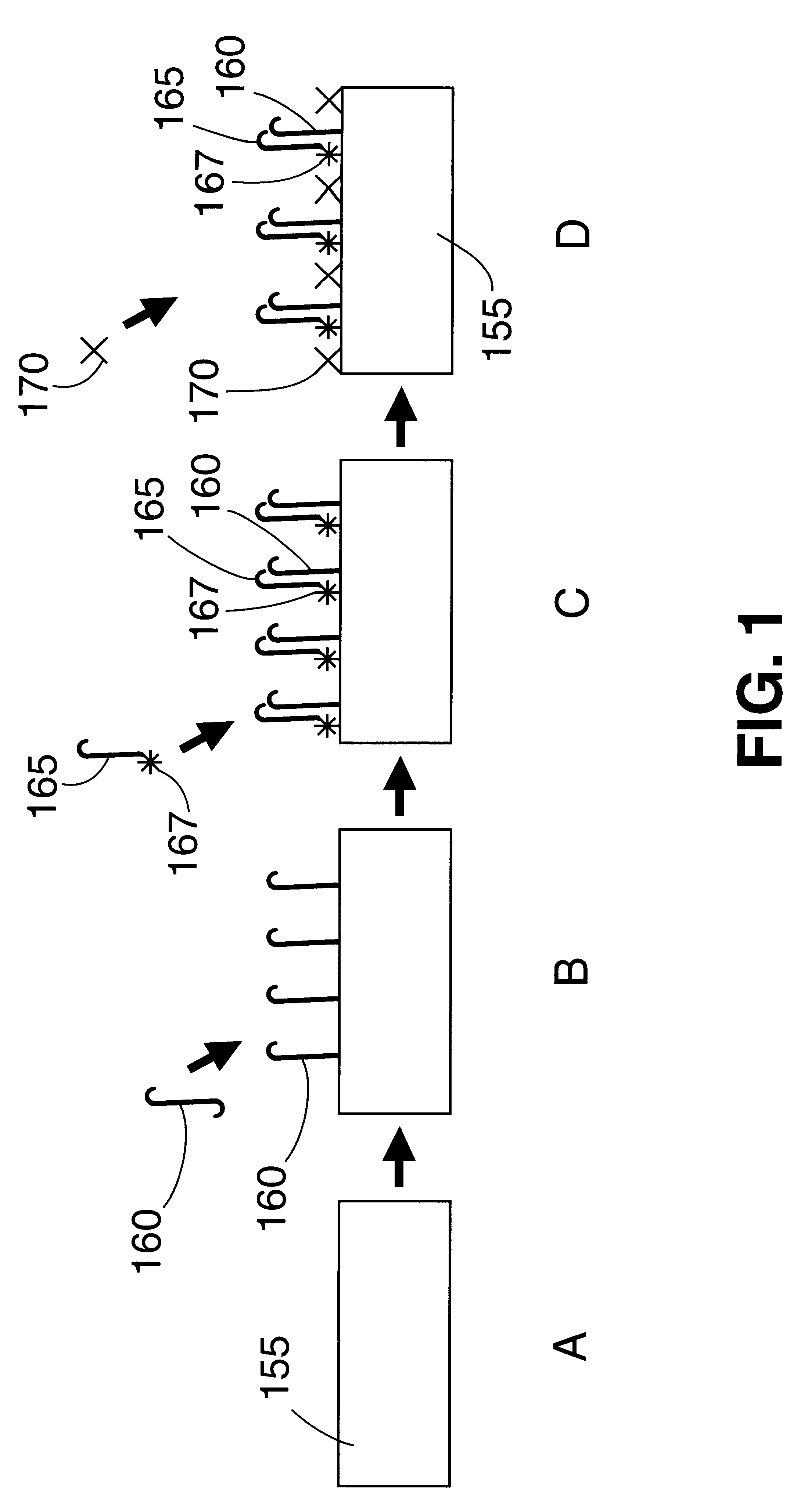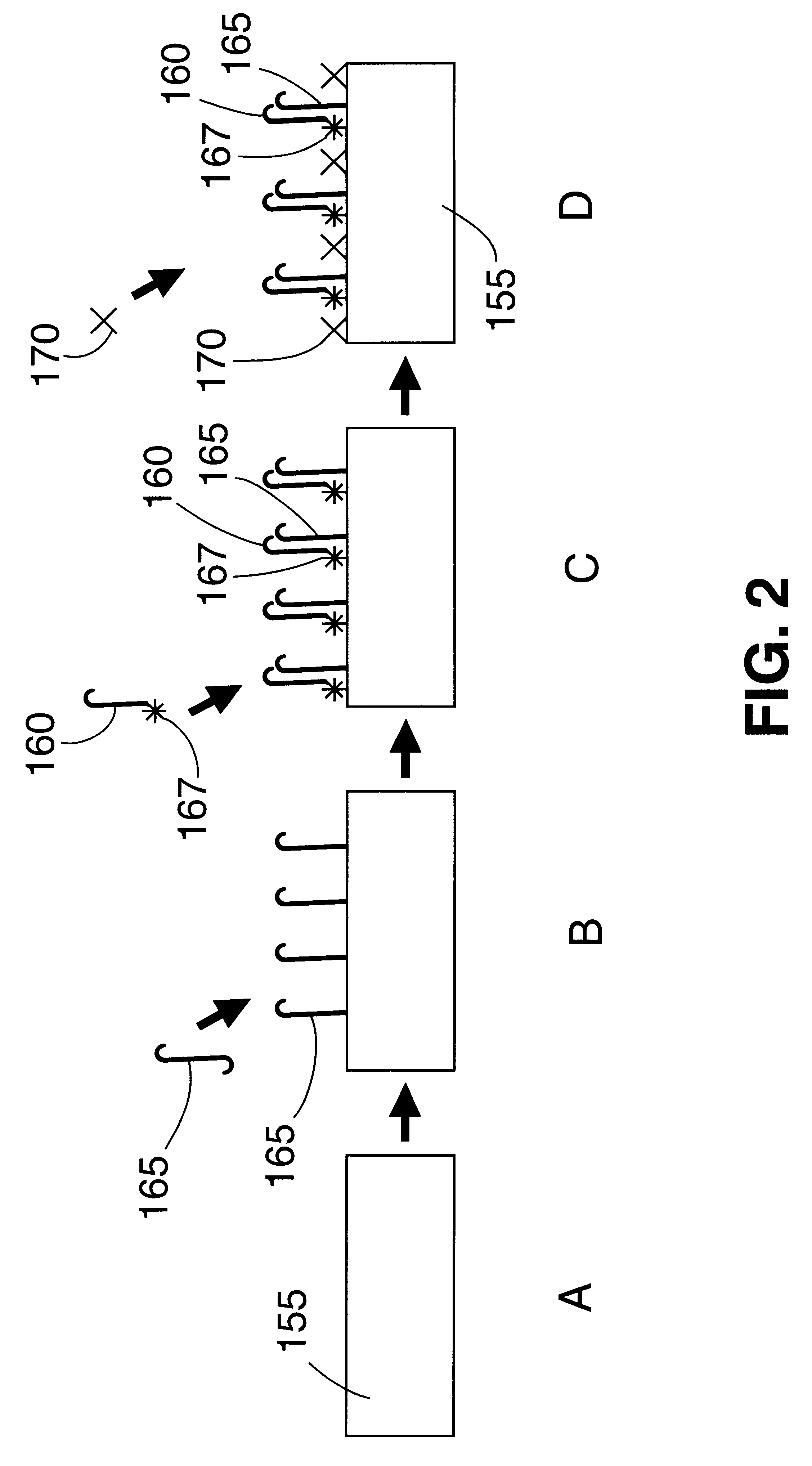Advanced surface-enhanced Raman gene probe systems and methods thereof
a gene probe and surface-enhanced technology, applied in the field of advanced surface-enhanced raman gene probe systems and methods, can solve the problems of phosphorus-32, unsuitable technology, and limited shelf life of the principal isotope used, and achieve the effect of producing nanostructure roughness
- Summary
- Abstract
- Description
- Claims
- Application Information
AI Technical Summary
Benefits of technology
Problems solved by technology
Method used
Image
Examples
example 2
Synthetic DNA templates from the gag region of HIV1 were utilized as a model system to test the utility of the PHA SERGene probe system for HIV1 detection. The method involved using a cresyl fast violet (CFV)-labeled DNA sequence as a primer in PCR amplification of the target DNA and hybridization to a capture probe sequence which is an internal sequence of the amplified product covalently bound onto a polystyrene substrate. All the oligonucleotides used in the example were synthesized using an Expedite 8909 nucleic acid synthesizer (Millipore). Expedite reagents were used providing faster synthesis, and deprotection times. The oligonucleotides were cleaved from the column by incubating the controlled pore glass (CPG) in ammonium hydroxide at room temperature for 2 hours. The dimethyl trityl protection groups on the nucleotides were removed by incubation with ammonium hydroxide at 55.degree. C. for 30 minutes. Ammonium hydroxide was removed by vacuum evaporation and the oligonucleot...
PUM
| Property | Measurement | Unit |
|---|---|---|
| Time | aaaaa | aaaaa |
| Energy | aaaaa | aaaaa |
| Magnetism | aaaaa | aaaaa |
Abstract
Description
Claims
Application Information
 Login to View More
Login to View More - R&D
- Intellectual Property
- Life Sciences
- Materials
- Tech Scout
- Unparalleled Data Quality
- Higher Quality Content
- 60% Fewer Hallucinations
Browse by: Latest US Patents, China's latest patents, Technical Efficacy Thesaurus, Application Domain, Technology Topic, Popular Technical Reports.
© 2025 PatSnap. All rights reserved.Legal|Privacy policy|Modern Slavery Act Transparency Statement|Sitemap|About US| Contact US: help@patsnap.com



